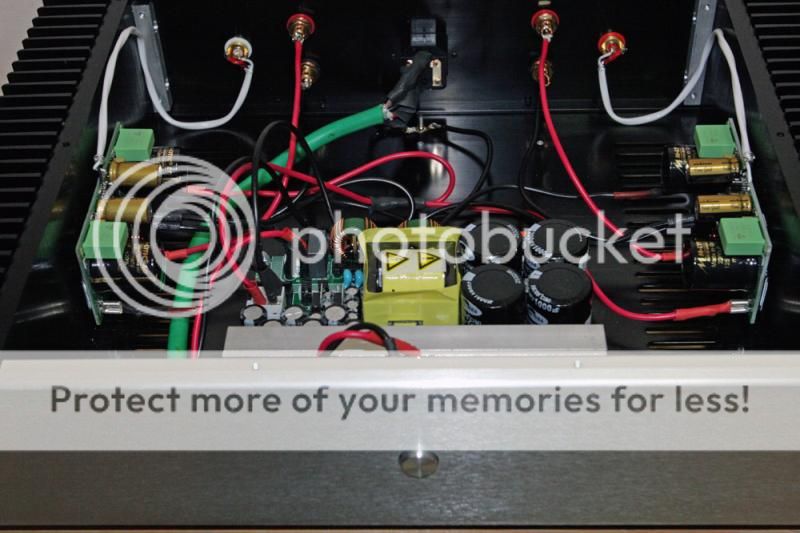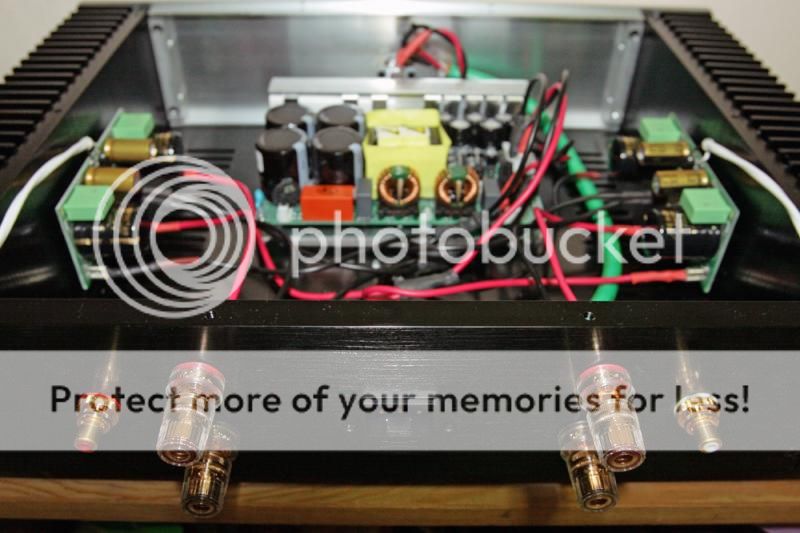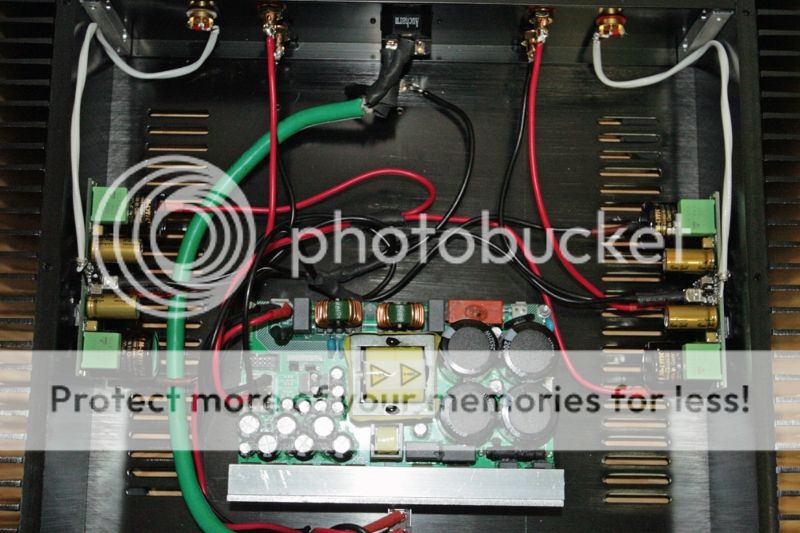I just completed the amp and is still singing  with the FE207E half chang speakers while writing this reply.
with the FE207E half chang speakers while writing this reply. 
Source is either from computer foobar or from Marrantz 63se CD player.
Listening impression I will write it when it is run in. I am happy with its sound right now as it works well with FE207E and Hypex SMPS
and Hypex SMPS
Thanks to LC for such a good masterpiece.



Regards,
James
 with the FE207E half chang speakers while writing this reply.
with the FE207E half chang speakers while writing this reply. Source is either from computer foobar or from Marrantz 63se CD player.
Listening impression I will write it when it is run in. I am happy with its sound right now as it works well with FE207E
Thanks to LC for such a good masterpiece.




Regards,
James
Listening impression I will write it when it is run in. I am happy with its sound right now as it works well with FE207Eand Hypex SMPS
Thanks to LC for such a good masterpiece.
Regards,
James
Hi James
Nice speakers you're driving.

Regards L.C.

They are from China TAOBAO. PM you the details.Did you buy your power amp chassis from LC or you bought it somewhere else? If so, could you post the link? It looks nice!
It's very nice realization, good job Chunek.
Thanks!
Amazing & well done!
 That is the pair of speakers I made. They serve me well with VSSA - singing lovely & lively for any kind of music
That is the pair of speakers I made. They serve me well with VSSA - singing lovely & lively for any kind of music 

 . Now with First ONE.
. Now with First ONE.Thanks,
James
Heatsinks, revisted
LC,
In the early posts you noted:
On a related note, for a bridged mode unit with say an SMPS1200A180 supplying ~+/-45v, what is the recommended thermal spec for the heatsinks?
Cheers
LC,
In the early posts you noted:
I am curious to know what your real world temperature monitoring , presumed to be with your 0.5K/W heatsinks, resulted in for both idle and big-power conditions. Reason for asking is that many DIY enclosures sport 0.6 +/-0.07 K/W heatsinks and I'm wondering if they would be workable.As we don't want to have more than 45 C in idle, please use heatsink having thermal coeficient of 0,5K/W or less for each channel.
First One module has 35 W idle power dissipation when supplied from +/-63 V PSU.
On a related note, for a bridged mode unit with say an SMPS1200A180 supplying ~+/-45v, what is the recommended thermal spec for the heatsinks?
Cheers
LC,
In the early posts you noted:
I am curious to know what your real world temperature monitoring , presumed to be with your 0.5K/W heatsinks, resulted in for both idle and big-power conditions. Reason for asking is that many DIY enclosures sport 0.6 +/-0.07 K/W heatsinks and I'm wondering if they would be workable.
On a related note, for a bridged mode unit with say an SMPS1200A180 supplying ~+/-45v, what is the recommended thermal spec for the heatsinks?
Cheers
The rough calculation will be
Amp Idle temperature = room temperature + heat sink coefficient * idle power
First one idle current is 280mA; Rail voltage will be 90Vpp; Idle power for bridge (2 sets) at each side will be 2*280mA*90Vpp ~ 50W
Let's say room temperature is set to 25 C. Amp Idle temperature is set to 45 C
The heaksink will be around 0.4K/W or lower.
Correct me if it is wrong!
Regards,
James
Last edited:
Heatsinks, revisted - take2
Hi James,
I wasn't too clear on the layout; planning for a monoblock, so just one amp module per side/sink. For idle, I get 90*.28 = ~25W causing a 20c rise from 25c ambient (for the 45c target) which is only a 0.8K/W rating. And, if we move the target down to 40c, then a 0.6K/W rating would be all that's needed, per side. Does that look right?
Here's what bothers me: for a full-on stereo setup with +/-63v rails, I get 126*.28 = 35.3W - which fits into a 20c rise with a sink rating of just 0.57K/W... not quite the same as the recommended < 0.4K/W so it seems I'm overlooking something.
Cheers
The rough calculation will be
Amp Idle temperature = room temperature + heat sink coefficient * idle power
First one idle current is 280mA; Rail voltage will be 90Vpp; Idle power for bridge (2 sets) at each side will be 2*280mA*90Vpp ~ 50W
Let's say room temperature is set to 25 C. Amp Idle temperature is set to 45 C
The heaksink will be around 0.4K/W or lower.
Correct me if it is wrong!
Regards,
James
Hi James,
I wasn't too clear on the layout; planning for a monoblock, so just one amp module per side/sink. For idle, I get 90*.28 = ~25W causing a 20c rise from 25c ambient (for the 45c target) which is only a 0.8K/W rating. And, if we move the target down to 40c, then a 0.6K/W rating would be all that's needed, per side. Does that look right?
Here's what bothers me: for a full-on stereo setup with +/-63v rails, I get 126*.28 = 35.3W - which fits into a 20c rise with a sink rating of just 0.57K/W... not quite the same as the recommended < 0.4K/W so it seems I'm overlooking something.
Cheers
If you take in consideration that, in case of excessive current, (And it will never happens) diodes usually break in short circuit, you are still protected the time your main overcurrent discontactor run in, i see no need of such an overkill.1st - the diodes, these should be rated for a PIV well above the peak mains voltage with a current rating that at least betters the primary mains fuse (at the inlet) - and some might argue for better than the mains breaker rating.
As the overcurrent discontactors are fast, the silicon of the diodes will never have the time to melt in open circuit. (as well as the amp fuses ;-)
About PIV, no matter, as there is two diodes upside down in //, the voltage can never go more than 0.7V in reverse, yes, no need for high voltage diodes.
Last edited:
Hi James,
I wasn't too clear on the layout; planning for a monoblock, so just one amp module per side/sink. For idle, I get 90*.28 = ~25W causing a 20c rise from 25c ambient (for the 45c target) which is only a 0.8K/W rating. And, if we move the target down to 40c, then a 0.6K/W rating would be all that's needed, per side. Does that look right?
Here's what bothers me: for a full-on stereo setup with +/-63v rails, I get 126*.28 = 35.3W - which fits into a 20c rise with a sink rating of just 0.57K/W... not quite the same as the recommended < 0.4K/W so it seems I'm overlooking something.
Cheers
Just find this application note from semelab website.
http://products.semelab-tt.com/pdf/ApplicationNoteAlfet.pdf
James
That's the calculation for the constant dissipation of a class-A amp, the First One is a class-AB amp, so besides it's constant dissipation of it's bias (0.28A) you'll have to take into account the extra power that you'll use, that depends on the music, volume and the power needed for your speakers (sensitivity, impedance).Here's what bothers me: for a full-on stereo setup with +/-63v rails, I get 126*.28 = 35.3W - which fits into a 20c rise with a sink rating of just 0.57K/W... not quite the same as the recommended < 0.4K/W so it seems I'm overlooking something.
Cheers
Just find this application note from semelab website.
http://products.semelab-tt.com/pdf/ApplicationNoteAlfet.pdf
James
In this design note, page 6 ~9 is heatsink design consideration. It is quite interesting to read.
Actually LC is recommended to have <0.5K/W heatsink. I am using 0.45K/W heatsink and the average temperature for normal listening for 4 hours is at 55C and it is hot to touch.
Regards,
James
Last edited:
Hi guys 
Regarding thermal considerations any calculation should start from power dissipation and desired temperature.
In the case of the First One module we have:
- 35 W idle power dissipation per module (PSU at +/-63 V)
- 45°C desired heatsink temperature in idle state (power on, no signal)
From these two parameters anyone can calculate needed heatsink temperature coeficient.
Regards L.C.

Regarding thermal considerations any calculation should start from power dissipation and desired temperature.
In the case of the First One module we have:
- 35 W idle power dissipation per module (PSU at +/-63 V)
- 45°C desired heatsink temperature in idle state (power on, no signal)
From these two parameters anyone can calculate needed heatsink temperature coeficient.
Regards L.C.

The heat will be already reduced by lower supply voltage. For further heat reduction you can lower bias current to 200 mA, but no lower than that.
Changing output transistors is also possible but in this case I can not guarantee the freq compensation will work properly.
What about bigger heatsinks?
Changing output transistors is also possible but in this case I can not guarantee the freq compensation will work properly.
What about bigger heatsinks?
I'm ready to purchase.
Is each FO amp module 2-ch? (Speaker load details below, which requires only stereo FO powered by one SMPS1200A400 and would not benefit with two SMPS1200A400 nor mono blocs.)
Please post USD cost for:
Stereo chassis, CNC holes precut for 2-channels FO amplifier
Two channels FO amplfiers
Is above chassis pre-cut for one Hypex SMPS1200A400?
What is availability? Lowest cost shipping to Western US?
Does FO have balanced input?
For which input jacks are holes cut? For which binding posts are holes cut?
Speaker Zephrin 46: two separate full range speaker systems per enclosure, each with its own crossover, an "On-Axis" section and "LCS Late Ceiling Splash" effects system. Each section is flat 16 Ohm above the bass range, 12 Ohm minimum, easy phase angle (10-12W tube amp at Newport THE Show never clipped). Total speaker sensitivity 93 dB.
On-Axis section alone is about 92 dB. The rear bottom section of Zephrin 46 comprises separate up-firing "LCS Late Ceiling Splash" effects system. The speaker designer aims for superb partnering with OTL amps.
Will audition Zephrin 46 with FO powering:
I'm guessing the latter outperforms the former. I suspect FO distortion spectra improves (less current demand) driving 16 Ohm load vs. 8 Ohm, plus less drivers to control.
Is each FO amp module 2-ch? (Speaker load details below, which requires only stereo FO powered by one SMPS1200A400 and would not benefit with two SMPS1200A400 nor mono blocs.)
Please post USD cost for:
Stereo chassis, CNC holes precut for 2-channels FO amplifier
Two channels FO amplfiers
Is above chassis pre-cut for one Hypex SMPS1200A400?
What is availability? Lowest cost shipping to Western US?
Does FO have balanced input?
For which input jacks are holes cut? For which binding posts are holes cut?
Speaker Zephrin 46: two separate full range speaker systems per enclosure, each with its own crossover, an "On-Axis" section and "LCS Late Ceiling Splash" effects system. Each section is flat 16 Ohm above the bass range, 12 Ohm minimum, easy phase angle (10-12W tube amp at Newport THE Show never clipped). Total speaker sensitivity 93 dB.
On-Axis section alone is about 92 dB. The rear bottom section of Zephrin 46 comprises separate up-firing "LCS Late Ceiling Splash" effects system. The speaker designer aims for superb partnering with OTL amps.
Will audition Zephrin 46 with FO powering:
- Both On-Axis + LCS section, two parallel 16 Ohm = 8 Ohm total
- On-Axis 16 Ohm section only (separate analog chip amp powers LCS section, making super clean 50W driving LCS 16 Ohm load)
I'm guessing the latter outperforms the former. I suspect FO distortion spectra improves (less current demand) driving 16 Ohm load vs. 8 Ohm, plus less drivers to control.
Last edited:
- Home
- Vendor's Bazaar
- First One - mosFET amplifier module